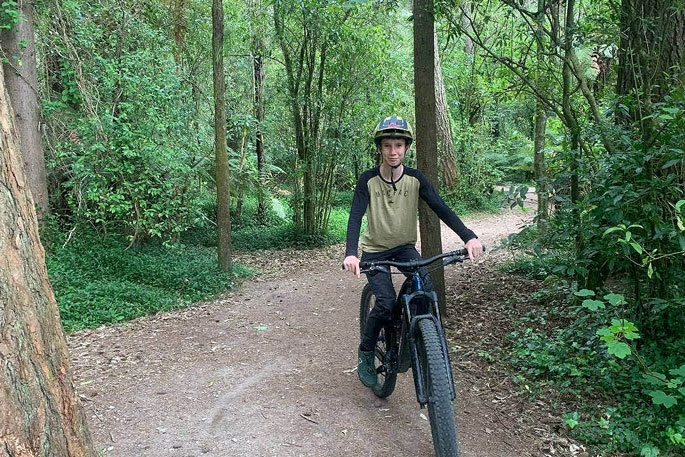Cameron Moore, 14, bikes through Rotorua's Whakarewarewa forest park almost every day after school.
“I love seeing the trees, how big they are. It’s beautiful,” says the 14-year-old.
He would dip between towering redwood trees – dodging ponga and other ferns. Rotorua's bush is threatened by pests that eat fresh shoots and damage the forests’ ecosystem.
When Cameron spotted a wallaby destroying the forest undergrowth, he decided to do something: “I really wanted to stop it”.
Cameron created an award-winning trap for wallabies that aims to manage pest control in a cruel-free way.
Using artificial intelligence, the trap can see what animal is interacting with it. If it’s a wallaby, the trap will be triggered. But if it’s not a pest, then the animal can pass unharmed.
Bay of Plenty Regional Council’s wallaby programme leader Davor Bejakovich says wallabies are a “really big issue” around Rotorua.
“They reduce the biodiversity of plants by feeding on seedlings and, indirectly, they affect everything in the food chain above them.”
Wallabies are notorious for plaguing farmers, destroying crops and forests alike.
“They [wallabies] have a two-pronged attack – harming the bush itself and damaging primary production,” says Bejakovich.
To achieve New Zealand’s goal of being predator-free by 2050, conservationists will have to broaden their arsenal, says Bejakovich. He's excited by Cameron’s project.
“Any solution that adds to our toolbox would be very, very welcome.”
Cameron’s AI trap isn't the only one in development.
New Zealand-based research and development company Critter Solutions is also creating an AI trap for pests that is set to hit the market at the end of 2024.
But unlike Cameron, none of the other inventors appear to have been in high school, building the device together with their dad’s drill, self-taught coding skills and a little bit of Kiwi ingenuity.
“It was a big learning curve,” says Cameron. “When I finally got it to work, I was so excited. I ran upstairs to tell my parents.”
Cameron’s project isn’t finished yet. His prototype has been trained to recognise pictures of wallabies, not the real thing.
But he soon hopes to have it ready to place along Whakarewarewa’s predator fence. Wallabies are known to poke their edge around the edge, looking for a way out.
“As well as confining the wallabies, that could actually remove them eventually,” he says.
Cameron won first place in Samsung’s Solve for Tomorrow competition, which celebrates New Zealand’s budding scientists.
More than half of the 2023 Solve For Tomorrow entries were dedicated to conservation and managing climate events.
Associate Professor Siouxsie Wiles, one of the judges, says the standard of submissions in 2023 was “really, really, high calibre”.
When asked about the scientists of tomorrow, Wiles smiled, “I think we’re in good hands.”



0 comments
Leave a Comment
You must be logged in to make a comment.